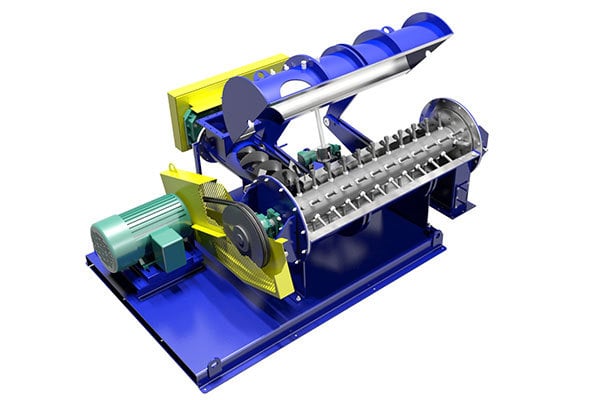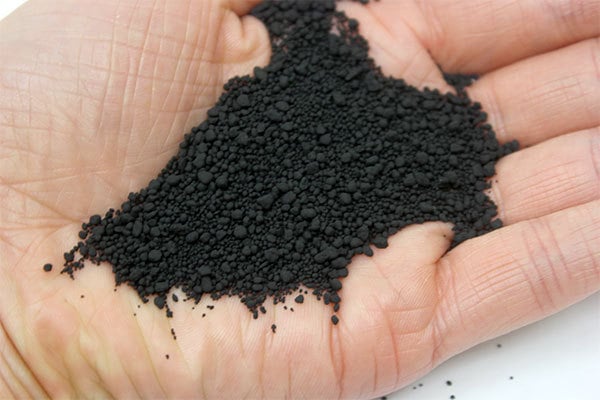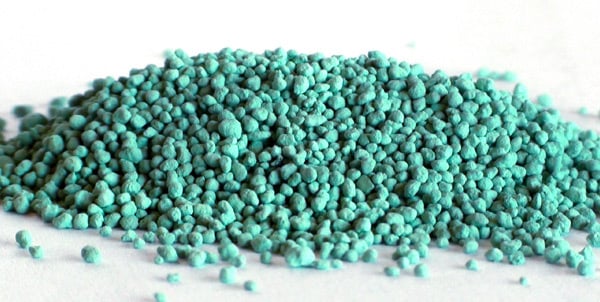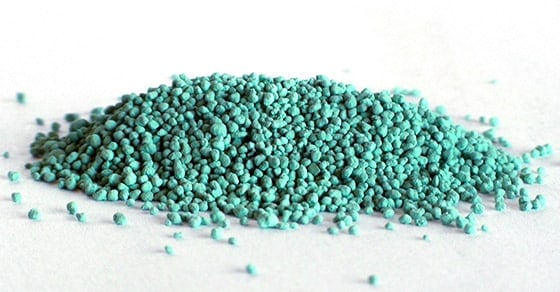The pin mixer is an industrial mixing solution ideal for mixing, conditioning, and agglomerating material fines in the presence of a binder. While the pugmill mixer (paddle mixer) is best suited for heavy-duty materials such as ores, the pin mixer excels in applications where extremely fine materials, such as powders, must be processed.
This continuous industrial mixer was originally developed in the 1940’s for use in the carbon black industry. Since then, however, the pin mixer has found its way into all sorts of industries and varied applications, with new ones being discovered all the time.
How a Pin Mixer Works
A pin mixer is composed of a central rotor shaft within a stationary housing. The shaft is affixed with multiple rods, or “pins,” which rotate along with the shaft at several hundred rpm.

3D Rendering of a FEECO Pin Mixer
Material feedstock and binder are fed at a continuous rate into the mixer. As material enters the mixer, it begins to mix with the binder. Once a thorough mixture has been created, the material naturally begins to agglomerate. Agglomeration is caused by the centrifugal force of the rotating pins, which roll the material against the interior wall of the stationary housing, creating “micro-pellets.” As the pellets continue to move through the length of the mixer, they become more dense.
A flexible binder spray system can accommodate various binders and can be adjusted for optimal spray location. The mixer is also sealed at various points to avoid fugitive dust from escaping, making this a closed system.
Benefits of Using a Pin Mixer
The pin mixer offers a variety of benefits, both from a product perspective and from a processing standpoint:
Increased Production
One major advantage to using a pin mixer is that it can densify pellets using less binder than a disc pelletizer. This is particularly valuable when used as a precursor to a disc pelletizer (also known as a pan granulator). In this setup, densification can be achieved more quickly in the mixer, instead of on the disc pelletizer, where densification can be a lengthy process utilizing more binder. For this reason, the addition of a pin mixer to a disc pelletizing system often increases production.
Reduced Binder Costs
The rotational forces of the pin mixer create a highly densified product. Because the densification is created through motion and not through the addition of more binder, this translates into reduced binder costs.
Improved Flowability
Compared to raw powder, micro-pellets have a much better flowability. This streamlines subsequent processing steps and helps to prevent clogging and dusting issues throughout processing.
Pin mixers are also particularly advantageous when working with materials that are resistant to accept moisture, because the high speed employed “forces” the dry and liquid portions of the material together.
Applications
Though they are perhaps most known for their de-dusting capabilities, pin mixers are also frequently used in mixing, conditioning, and agglomerating applications as well.
Dust Suppression and Conditioning
Pin mixers are frequently used to de-dust and condition dusty materials; their aptitude for thoroughly mixing extremely fine materials with minimal binder makes them an ideal solution for wetting dusty materials. Material fines de-dusted in a pin mixer are much easier to handle and transport.
As mentioned, the pin mixer is also ideal for conditioning materials in a disc pelletizing system. In addition to the benefits mentioned above, when used as a precursor to a disc pelletizer, a pin mixer provides the pelletizer with a seed pellet that is optimized for pelletizing on the disc pelletizer, with the proper amount of moisture, densification, and an even distribution of binder.

De-dusted carbon black after pin mixer processing
In addition to this use, pin mixers are also frequently used to reintroduce recycle back into a process. This can be beneficial for two reasons:
- After crushing, over- and under-size granules can be put back into the process, and therefore are not lost as waste.
- Adding recycle back into the process can aid in pre-drying material that has a starting moisture content above what is needed for agglomeration.
Common de-dusting applications:
- Coal Dust
- Fly Ash
Common conditioning applications:
Mixing
As mentioned, pin mixers are ideal for use with ultra-fine materials, and particularly those that are resistant to accept moisture.
Common Mixing Applications:
- Clays and Ceramics
- Pigments and Dyes

Paint pigment micro pellets produced in a FEECO Pin Mixer
Agglomeration
Often times, a material may need to be agglomerated, but does not require the extent of a full disc pelletizing system. In these situations, a pin mixer can offer a reliable, stand-alone agglomeration unit. The spherical micro-pellets produced in a pin mixer offer improved dust-free handling and transportation.
Common Agglomeration Applications
- Fly Ash
- Gypsum
- Cat Litter
Why a FEECO Pin Mixer
Choosing a FEECO pin mixer offers a variety of benefits.
FEECO pin mixers are backed by a wealth of material and process knowledge, and a familiarity with agglomeration that is second to none. FEECO pin mixers are custom designed to suit exact processing needs and feature heavy-duty construction, for a long life of efficient processing.
FEECO pin mixers also offer a variety of additional customizations, including various pin arrangements, precise feed-to-liquid ratios for optimal processing, various material options, and custom designed control panels.
Conclusion
The pin mixer is an ideal solution when looking to process ultra-fine materials. They offer efficient, continuous processing and can be used in mixing, conditioning, de-dusting, or agglomeration applications. Pin mixers offer a variety of benefits, both as a stand-alone agglomeration device, and as part of a disc pelletizing system. For these reasons, pin mixers continue to find their way into new applications
FEECO also offers a unique testing facility to confirm feasibility, aid in process and product development, and establish process variables. To learn more about FEECO pin mixers, contact us today!



